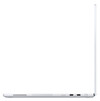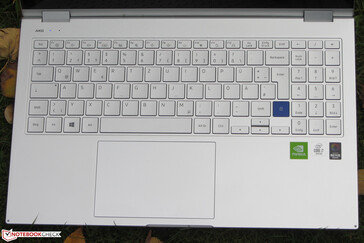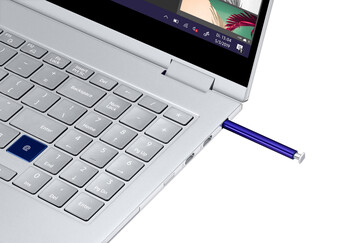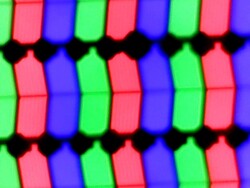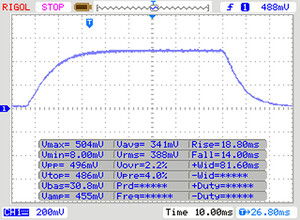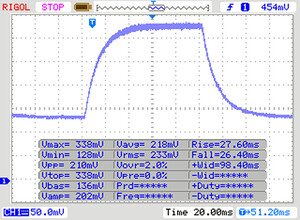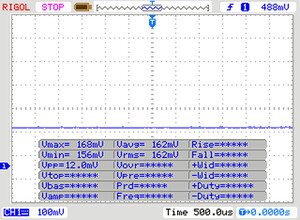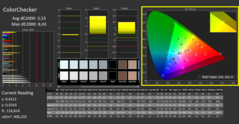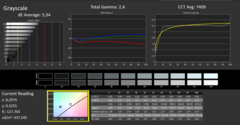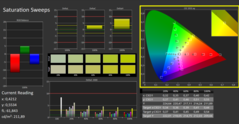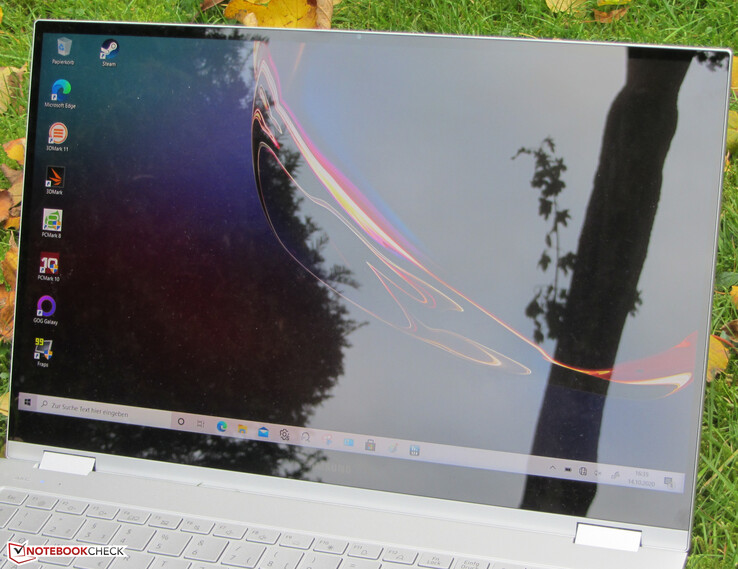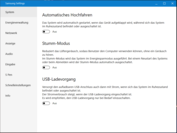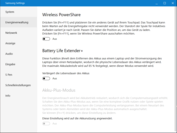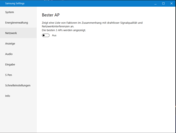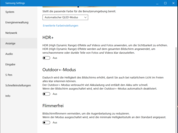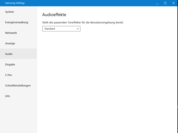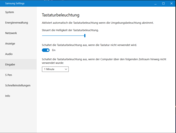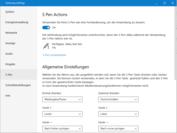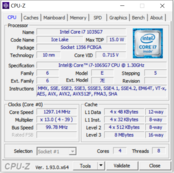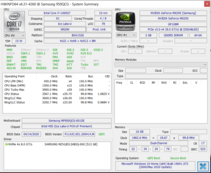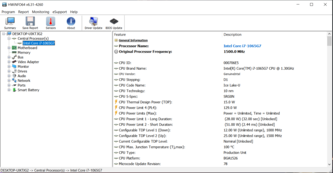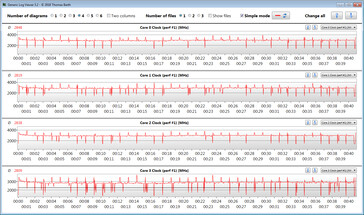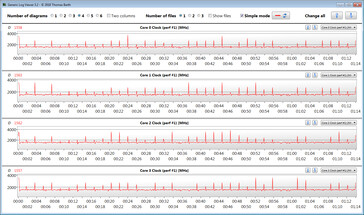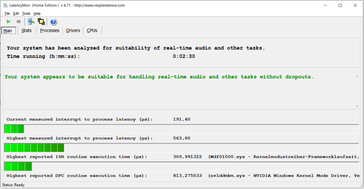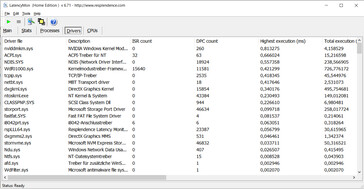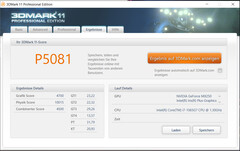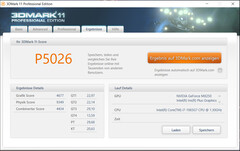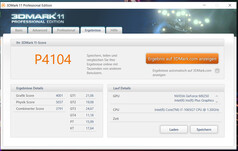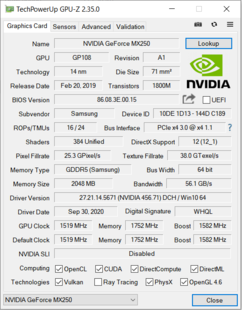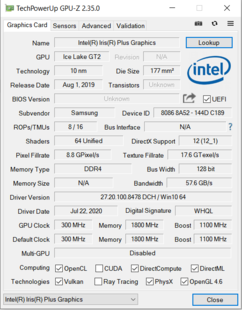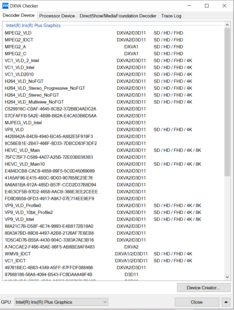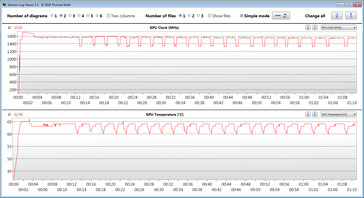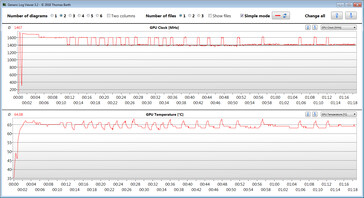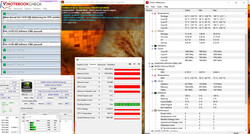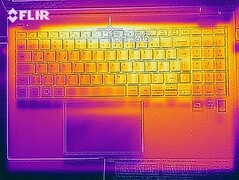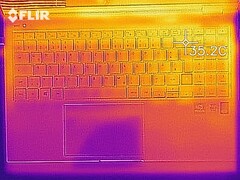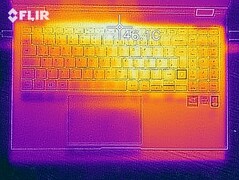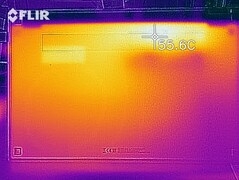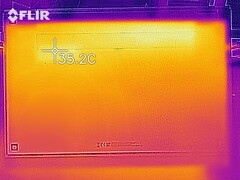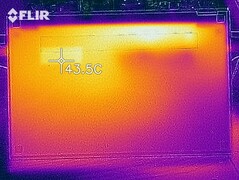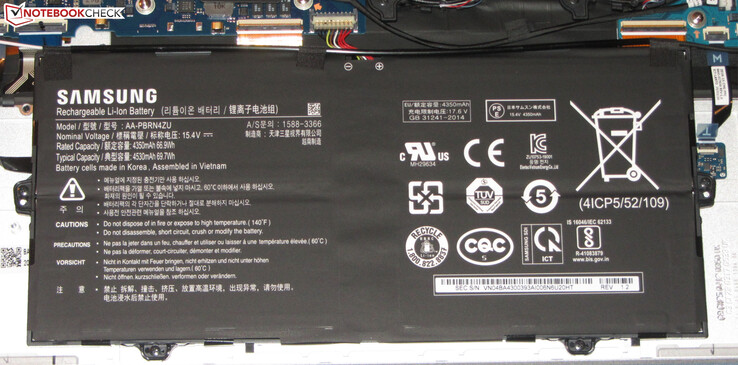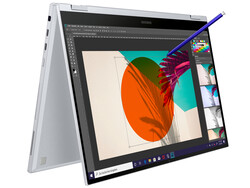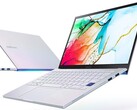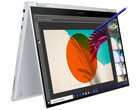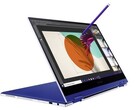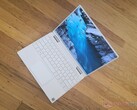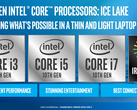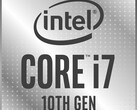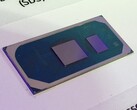Samsung Galaxy Book Flex NP950QCG Review: Very Bright Display Thanks To Outdoor+ Mode

Samsung’s Galaxy Book Flex is a thin and compact 15.6-inch convertible equipped with a Core i7-1065G7 and a GeForce MX250. Its main competitors are the HP Envy x360 15, Asus ZenBook Flip 15 UX563FDT, and Lenovo Yoga C740-15IML.
Rating | Date | Model | Weight | Height | Size | Resolution | Price |
|---|---|---|---|---|---|---|---|
| 87.3 % v7 (old) | 10 / 2020 | Samsung Galaxy Book Flex 15-NP950 i7-1065G7, GeForce MX250 | 1.6 kg | 14.9 mm | 15.60" | 1920x1080 | |
| 82.8 % v7 (old) | 09 / 2020 | HP Envy x360 15-ee0257ng R5 4500U, Vega 6 | 2 kg | 18.9 mm | 15.60" | 1920x1080 | |
| 86.5 % v7 (old) | 03 / 2020 | Asus ZenBook Flip 15 UX563FD-A1027T i7-10510U, GeForce GTX 1050 Max-Q | 1.9 kg | 19.9 mm | 15.60" | 3840x2160 | |
| 84.8 % v7 (old) | 01 / 2020 | Lenovo Yoga C740-15IML i7-10510U, UHD Graphics 620 | 1.9 kg | 17.25 mm | 15.60" | 1920x1080 |
Case & Connectivity – Thunderbolt 3 Included
For the Galaxy Flex, Samsung opted for a silver slim metal case with matted surfaces. The gaps are even, and we found no crevices or overhangs anywhere. The base unit could have been more rigid. In order to get to the internal hardware, you need to remove the screws hidden underneath the four rubber feet (clicked into place, not glued). Once undone you can start to carefully pry the delicate bottom cover open.
A total of three USB-C ports are available, two of which are connected to Thunderbolt 3 and the remaining to USB 3.2 Gen 1. A USB-C to USB-A dongle is included in the box. All three USB-C ports support Power Delivery as well as DisplayPort, which can be very beneficial. The latter requires a separate dongle that is not included in the box.
When equipped with our 64 GB Toshiba Exceria Pro M501 microSDXC reference card the microSD card reader performed very well and managed maximum transfer speeds of 78.9 MB/s (transferring 250 JPEG files with 5 MB each) and 89.3 MB/s (transferring large files).
Intel’s AX201 Wi-Fi chip supports 802.11 a/b/g/n/ac/ax. When connected to our Netgear Nighthawk AX12 reference router the device performed exceptionally well under ideal conditions (no other Wi-Fi devices nearby, low distance between notebook and server).
Connectivity
| SD Card Reader | |
| average JPG Copy Test (av. of 3 runs) | |
| Samsung Galaxy Book Flex 15-NP950 (Toshiba Exceria Pro M501 microSDXC 64GB) | |
| HP Envy x360 15-ee0257ng (Toshiba Exceria Pro SDXC 64 GB UHS-II) | |
| Asus ZenBook Flip 15 UX563FD-A1027T (Toshiba Exceria Pro SDXC 64 GB UHS-II) | |
| Average of class Convertible (28.1 - 209, n=23, last 2 years) | |
| maximum AS SSD Seq Read Test (1GB) | |
| Average of class Convertible (28.9 - 253, n=22, last 2 years) | |
| Samsung Galaxy Book Flex 15-NP950 (Toshiba Exceria Pro M501 microSDXC 64GB) | |
| HP Envy x360 15-ee0257ng (Toshiba Exceria Pro SDXC 64 GB UHS-II) | |
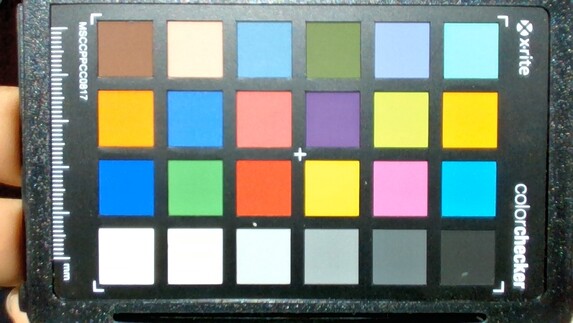
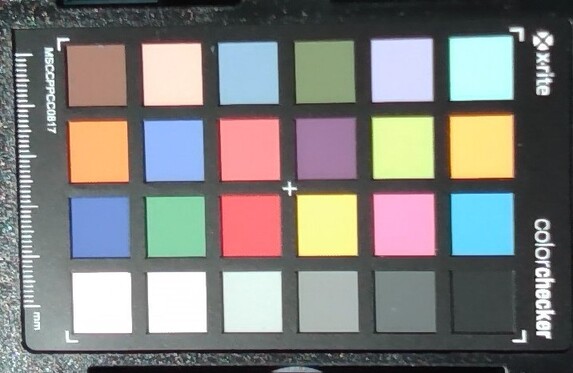
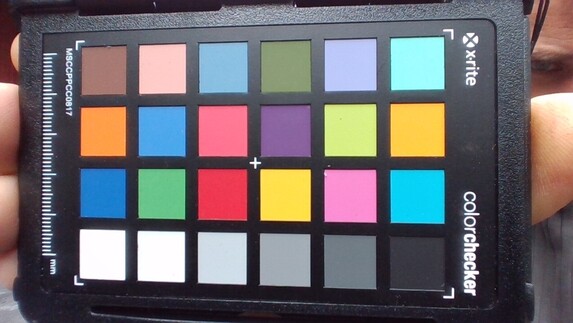
Input Devices – Galax Book Supports Wireless Smartphone Charging
The backlit chiclet keyboard features rather shallow key travel but a very well-defined accentuation point in return. Key resistance was good. The keyboard does not flex while typing. The cursor keys are fairly small. The writing on the silver key caps is hard to read with the keyboard backlit enabled at normal brightness conditions. All in all, the keyboard turned out to be usable.
The large (4.8 x 3.1 inches) multitouch-capable clickpad features short key travel and a well-defined accentuation point. Not only is it a way to control the cursor but it can also charge Qi-enabled smartphones wirelessly. The charging feature is enabled and disabled via a keypress (FN + F11) and referred to as “Wireless Power Share” by Samsung.
The touchscreen (10-point multitouch) is fast and did not cause any issues during our review period. It supports input via fingers or the included S Pen. The latter is charged wirelessly.
Display – QLED with High Maximum Brightness
The 15.6-inch touchscreen display runs at a native resolution of 1920 x 1080. Its contrast ratio of 1,282:1 is decent and its brightness of 405 nits very good. The latter can be boosted to up to 600 nits by activating the so-called Outdoor+ mode. A big plus: the display did not show any signs of PWN flickering.
| |||||||||||||||||||||||||
Brightness Distribution: 88 %
Center on Battery: 372 cd/m²
Contrast: 1282:1 (Black: 0.34 cd/m²)
ΔE ColorChecker Calman: 3.53 | ∀{0.5-29.43 Ø4.78}
ΔE Greyscale Calman: 5.34 | ∀{0.09-98 Ø5}
100% sRGB (Argyll 1.6.3 3D)
78% AdobeRGB 1998 (Argyll 1.6.3 3D)
86.9% AdobeRGB 1998 (Argyll 3D)
99.9% sRGB (Argyll 3D)
99% Display P3 (Argyll 3D)
Gamma: 2.4
CCT: 7409 K
| Samsung Galaxy Book Flex 15-NP950 BOE HF NE156FHM-N51, IPS, QLED, 1920x1080, 15.6" | HP Envy x360 15-ee0257ng BOE NV156FHM-N4T, IPS, 1920x1080, 15.6" | Asus ZenBook Flip 15 UX563FD-A1027T BOE HF NE156QUM-N64, IPS, 3840x2160, 15.6" | Lenovo Yoga C740-15IML B156HAN02.5, IPS LED, 1920x1080, 15.6" | |
|---|---|---|---|---|
| Display | -50% | -19% | -52% | |
| Display P3 Coverage (%) | 99 | 40.43 -59% | 66.2 -33% | 39.04 -61% |
| sRGB Coverage (%) | 99.9 | 59.6 -40% | 97.2 -3% | 57.9 -42% |
| AdobeRGB 1998 Coverage (%) | 86.9 | 41.77 -52% | 68.3 -21% | 40.33 -54% |
| Response Times | 35% | -11% | 2% | |
| Response Time Grey 50% / Grey 80% * (ms) | 53 ? | 34 ? 36% | 60 ? -13% | 50.8 ? 4% |
| Response Time Black / White * (ms) | 32 ? | 21 ? 34% | 35 ? -9% | 32.4 ? -1% |
| PWM Frequency (Hz) | ||||
| Screen | -34% | 11% | -41% | |
| Brightness middle (cd/m²) | 436 | 314 -28% | 351 -19% | 286 -34% |
| Brightness (cd/m²) | 406 | 280 -31% | 335 -17% | 268 -34% |
| Brightness Distribution (%) | 88 | 72 -18% | 87 -1% | 83 -6% |
| Black Level * (cd/m²) | 0.34 | 0.275 19% | 0.31 9% | 0.2 41% |
| Contrast (:1) | 1282 | 1142 -11% | 1132 -12% | 1430 12% |
| Colorchecker dE 2000 * | 3.53 | 5.94 -68% | 1.74 51% | 7.3 -107% |
| Colorchecker dE 2000 max. * | 8.43 | 21.71 -158% | 2.76 67% | 21.7 -157% |
| Greyscale dE 2000 * | 5.34 | 2.97 44% | 2.22 58% | 7 -31% |
| Gamma | 2.4 92% | 2.4 92% | 2.35 94% | 2.35 94% |
| CCT | 7409 88% | 6581 99% | 6667 97% | 5847 111% |
| Color Space (Percent of AdobeRGB 1998) (%) | 78 | 38.1 -51% | 62 -21% | 36.9 -53% |
| Color Space (Percent of sRGB) (%) | 100 | 59.1 -41% | 97 -3% | 57.5 -42% |
| Colorchecker dE 2000 calibrated * | 5.15 | 5.1 | ||
| Total Average (Program / Settings) | -16% /
-28% | -6% /
2% | -30% /
-38% |
* ... smaller is better
Display Response Times
| ↔ Response Time Black to White | ||
|---|---|---|
| 32 ms ... rise ↗ and fall ↘ combined | ↗ 18 ms rise | |
| ↘ 14 ms fall | ||
| The screen shows slow response rates in our tests and will be unsatisfactory for gamers. In comparison, all tested devices range from 0.1 (minimum) to 240 (maximum) ms. » 85 % of all devices are better. This means that the measured response time is worse than the average of all tested devices (20.2 ms). | ||
| ↔ Response Time 50% Grey to 80% Grey | ||
| 53 ms ... rise ↗ and fall ↘ combined | ↗ 27 ms rise | |
| ↘ 26 ms fall | ||
| The screen shows slow response rates in our tests and will be unsatisfactory for gamers. In comparison, all tested devices range from 0.165 (minimum) to 636 (maximum) ms. » 90 % of all devices are better. This means that the measured response time is worse than the average of all tested devices (31.6 ms). | ||
Screen Flickering / PWM (Pulse-Width Modulation)
| Screen flickering / PWM not detected | |||
In comparison: 53 % of all tested devices do not use PWM to dim the display. If PWM was detected, an average of 8098 (minimum: 5 - maximum: 343500) Hz was measured. | |||
Color accuracy was very good out of the box already, and with a DeltaE 2000 deviation of 3.5 it only barely missed the ideal of less than 3. The display did not suffer from a blue tint. It covers sRGB completely (100 %), and AdobeRGB by a decent 73 %.
Viewing angles are as wide as expected of an IPS panel, and it remains readable from all angles. Outdoors, it remains well usable thanks to its high display brightness. Nevertheless, its reflective display coating can be quite a hassle and challenge to overcome.
Performance – Enough for Office and Internet
The Galaxy Book Flex offers enough performance for office and internet applications. Our review unit was priced at around 1,800 Euros at the time of writing, with various other SKUs also available.
Normal Mode vs. Silent Mode
The preloaded Samsung Settings applications supports a so-called “Silent Mode”, which can lower noise emissions significantly at the expense of performance. However, the convertible is anything but silent in this mode, and “Quiet Mode” would have been a much better translation and description. We included some benchmark results obtained with activated Silent Mode below.
Processor
The Core i7-1065G7 (Ice Lake) quad-core CPU runs at a base clock speed of 1.3 GHz and can turbo boost up to 3.4 GHz on all four cores or up to 3.9 GHz on a single core. It supports Hyperthreading (two threads per core).
When running our CineBench multi-thread test the cores boost up to 3.3-3.5 GHz for a short period of time before settling at a slightly lower 2.9-3.1 GHz. In the single-thread test, recorded clock speeds varied between 1.6-3.9 GHz. On battery, clock speeds were throttled to just 1.4 and 1.6 GHz in the multi and single-thread test, respectively.
Whether or not a device is capable of maintaining high turbo boost speeds over long periods of time is determined by our CineBench R15 multi-thread loop running for at least 30 minutes. In this case, turbo boost is still applied albeit at medium levels. With Silent Mode enabled we found practically no application of turbo boost at all.
| Cinebench R15 | |
| CPU Single 64Bit | |
| Average of class Convertible (149.8 - 317, n=56, last 2 years) | |
| Asus ZenBook Flip 15 UX563FD-A1027T | |
| Lenovo Yoga C740-15IML | |
| Samsung Galaxy Book Flex 15-NP950 | |
| Average Intel Core i7-1065G7 (141 - 190, n=35) | |
| HP Envy x360 15-ee0257ng | |
| Samsung Galaxy Book Flex 15-NP950 (Silent Mode) | |
| CPU Multi 64Bit | |
| Average of class Convertible (478 - 4830, n=59, last 2 years) | |
| HP Envy x360 15-ee0257ng | |
| Asus ZenBook Flip 15 UX563FD-A1027T | |
| Samsung Galaxy Book Flex 15-NP950 | |
| Lenovo Yoga C740-15IML | |
| Average Intel Core i7-1065G7 (288 - 836, n=36) | |
| Samsung Galaxy Book Flex 15-NP950 (Silent Mode) | |
* ... smaller is better
System Performance
Overall system performance is smooth and fast. We did not encounter any issues. The CPU was more than capable to run all office and internet applications smoothly. PCMark benchmark results were decent.
| PCMark 8 Home Score Accelerated v2 | 3981 points | |
| PCMark 8 Creative Score Accelerated v2 | 4395 points | |
| PCMark 8 Work Score Accelerated v2 | 5249 points | |
| PCMark 10 Score | 4673 points | |
Help | ||
| DPC Latencies / LatencyMon - interrupt to process latency (max), Web, Youtube, Prime95 | |
| Samsung Galaxy Book Flex 15-NP950 | |
| HP Envy x360 15-ee0257ng | |
* ... smaller is better
Storage Devices
| Samsung Galaxy Book Flex 15-NP950 Samsung SSD PM981a MZVLB512HBJQ | HP Envy x360 15-ee0257ng Intel SSD 660p SSDPEKNW512G8 | Asus ZenBook Flip 15 UX563FD-A1027T Samsung SSD PM981 MZVLB1T0HALR | Lenovo Yoga C740-15IML Samsung SSD PM981 MZVLB512HAJQ | Average Samsung SSD PM981a MZVLB512HBJQ | Average of class Convertible | |
|---|---|---|---|---|---|---|
| CrystalDiskMark 5.2 / 6 | -38% | -12% | -4% | -6% | 17% | |
| Write 4K (MB/s) | 173.4 | 104.5 -40% | 137.8 -21% | 142.3 -18% | 140.8 ? -19% | 136.8 ? -21% |
| Read 4K (MB/s) | 50.9 | 49.7 -2% | 44.15 -13% | 47.56 -7% | 48.6 ? -5% | 64.4 ? 27% |
| Write Seq (MB/s) | 2168 | 981 -55% | 2073 -4% | 2185 1% | 2106 ? -3% | 2516 ? 16% |
| Read Seq (MB/s) | 1854 | 1517 -18% | 2165 17% | 2235 21% | 2099 ? 13% | 2904 ? 57% |
| Write 4K Q32T1 (MB/s) | 520 | 398.8 -23% | 431.9 -17% | 515 -1% | 451 ? -13% | 422 ? -19% |
| Read 4K Q32T1 (MB/s) | 585 | 338.4 -42% | 427.7 -27% | 413.4 -29% | 482 ? -18% | 548 ? -6% |
| Write Seq Q32T1 (MB/s) | 2994 | 982 -67% | 2253 -25% | 2981 0% | 2903 ? -3% | 3931 ? 31% |
| Read Seq Q32T1 (MB/s) | 3551 | 1650 -54% | 3480 -2% | 3565 0% | 3511 ? -1% | 5439 ? 53% |
| AS SSD | -53% | -19% | -8% | -12% | -8% | |
| Seq Read (MB/s) | 2453 | 1587 -35% | 2739 12% | 2732 11% | 2412 ? -2% | 4138 ? 69% |
| Seq Write (MB/s) | 2339 | 864 -63% | 1307 -44% | 1477 -37% | 1983 ? -15% | 2738 ? 17% |
| 4K Read (MB/s) | 60.3 | 51.6 -14% | 47.43 -21% | 57.7 -4% | 53.1 ? -12% | 58 ? -4% |
| 4K Write (MB/s) | 142 | 125.1 -12% | 126 -11% | 136.3 -4% | 131.1 ? -8% | 164.8 ? 16% |
| 4K-64 Read (MB/s) | 1357 | 323.1 -76% | 1013 -25% | 1021 -25% | 1201 ? -11% | 890 ? -34% |
| 4K-64 Write (MB/s) | 1467 | 724 -51% | 1371 -7% | 1651 13% | 1726 ? 18% | 1761 ? 20% |
| Access Time Read * (ms) | 0.044 | 0.101 -130% | 0.082 -86% | 0.062 -41% | 0.05525 ? -26% | 0.07514 ? -71% |
| Access Time Write * (ms) | 0.027 | 0.046 -70% | 0.029 -7% | 0.028 -4% | 0.05394 ? -100% | 0.08482 ? -214% |
| Score Read (Points) | 1662 | 533 -68% | 1335 -20% | 1352 -19% | 1495 ? -10% | 1361 ? -18% |
| Score Write (Points) | 1843 | 935 -49% | 1628 -12% | 1935 5% | 2055 ? 12% | 2200 ? 19% |
| Score Total (Points) | 4361 | 1725 -60% | 3582 -18% | 3929 -10% | 4303 ? -1% | 4200 ? -4% |
| Copy ISO MB/s (MB/s) | 2254 | 1323 -41% | 1931 -14% | 1972 -13% | 1894 ? -16% | 2567 ? 14% |
| Copy Program MB/s (MB/s) | 521 | 340.8 -35% | 457.9 -12% | 642 23% | 539 ? 3% | 763 ? 46% |
| Copy Game MB/s (MB/s) | 1242 | 823 -34% | 1242 0% | 1090 -12% | 1193 ? -4% | 1604 ? 29% |
| Total Average (Program / Settings) | -46% /
-47% | -16% /
-16% | -6% /
-7% | -9% /
-10% | 5% /
1% |
* ... smaller is better
Sustained Read: DiskSpd Read Loop, Queue Depth 8
GPU Performance
The GPU of Samsung’s choice is a slightly aged GeForce MX250 (Pascal) with access to 2 GB of GDDR5 VRAM. Its 3DMark benchmark results are at a level expected of this GPU. Given that the notebook supports Nvidia Optimus switching graphics its Intel CPU’s Iris Plus Graphics G7 is active as well.
| 3DMark 11 Performance | 5081 points | |
| 3DMark Cloud Gate Standard Score | 11929 points | |
| 3DMark Fire Strike Score | 3406 points | |
| 3DMark Time Spy Score | 1244 points | |
Help | ||
| 3DMark 11 - 1280x720 Performance GPU | |
| Average of class Convertible (1505 - 40732, n=55, last 2 years) | |
| Asus ZenBook Flip 15 UX563FD-A1027T | |
| HP Envy x360 15-ee0257ng | |
| Samsung Galaxy Book Flex 15-NP950 | |
| Average NVIDIA GeForce MX250 (3585 - 4942, n=29) | |
| Samsung Galaxy Book Flex 15-NP950 (Silent Mode) | |
| Lenovo Yoga C740-15IML | |
Gaming Performance
This particular combination of CPU and GPU is capable of handling quite a few games smoothly, albeit at low resolutions and reduced details. Some more moderate games will even allow for higher settings. In return, current and more demanding games will require even further cutbacks on resolution and/or details.
| The Witcher 3 - 1024x768 Low Graphics & Postprocessing | |
| Average of class Convertible (22 - 299, n=20, last 2 years) | |
| Asus ZenBook Flip 15 UX563FD-A1027T | |
| Samsung Galaxy Book Flex 15-NP950 | |
| Average NVIDIA GeForce MX250 (47.4 - 70, n=24) | |
| HP Envy x360 15-ee0257ng | |
| Shadow of the Tomb Raider - 1280x720 Lowest Preset | |
| Average of class Convertible (24 - 95.5, n=2, last 2 years) | |
| Samsung Galaxy Book Flex 15-NP950 | |
| Average NVIDIA GeForce MX250 (24 - 56, n=8) | |
| Asus ZenBook Flip 15 UX563FD-A1027T | |
| F1 2020 - 1280x720 Ultra Low Preset | |
| Average of class Convertible (n=1last 2 years) | |
| Average NVIDIA GeForce MX250 (74 - 80, n=2) | |
| Samsung Galaxy Book Flex 15-NP950 | |
| HP Envy x360 15-ee0257ng | |
| Serious Sam 4 - 1280x720 Lowest (DX12) | |
| Samsung Galaxy Book Flex 15-NP950 | |
| Average NVIDIA GeForce MX250 (n=1) | |
| Star Wars Squadrons - 1920x1080 Medium Preset | |
| Samsung Galaxy Book Flex 15-NP950 | |
| Average NVIDIA GeForce MX250 (n=1) | |
We determine and evaluate sustained GPU performance by running Witcher 3 in FHD with maximum details without moving the avatar for a full hour.
By running this test, we were able to determine that after around 12 minutes the GPU started to throttle below its base clock speed and ran at just 1,519-1,582 MHz. Consequently, we noticed a drop in recorded frame rates. Given that these were significantly too low for smooth gameplay anyway we decided to run the same test with minimum details as well. The behavior was identical.
All in all, we can summarize that while the device is capable of gaming you will have to live with slightly fluctuating frame rates.
| low | med. | high | ultra | |
|---|---|---|---|---|
| The Witcher 3 (2015) | 62.1 | 34.9 | 20.4 | 11 |
| Shadow of the Tomb Raider (2018) | 48 | 17 | 13 | 9 |
| Gears Tactics (2020) | 65.7 | 19.9 | 15.8 | 11.5 |
| F1 2020 (2020) | 74 | 35 | 22 | |
| Death Stranding (2020) | 31.8 | 15.2 | 13.8 | |
| Horizon Zero Dawn (2020) | 28 | 13 | 11 | |
| Flight Simulator 2020 (2020) | 26 | 11 | 6.6 | |
| Serious Sam 4 (2020) | 67.2 | 9.79 | 6.75 | |
| Mafia Definitive Edition (2020) | 36 | 15 | 13.8 | |
| Star Wars Squadrons (2020) | 103.3 | 46 | 36.6 | 33.4 |
| FIFA 21 (2020) | 131.3 | 76.1 | 70.9 | 54.4 |
Emissions & Energy – Samsung Convertible with Stamina
Noise Emissions
When idle both fans are off regularly, and the device thus completely silent. They did not speed up too aggressively under load either and peaked at just 38.5 dB(A) while running our stress test. You can further lower noise emissions at the expense of performance by enabling Silent Mode.
Noise level
| Idle |
| 24.9 / 24.9 / 24.9 dB(A) |
| Load |
| 38.4 / 38.5 dB(A) |
 | ||
30 dB silent 40 dB(A) audible 50 dB(A) loud |
||
min: | ||
Temperature
When running our stress test (Prime95 and FurMark simultaneously for at least one hour) CPU and GPU ran at 1.0-1.5 GHz and 900-1,000 MHz, respectively. Keep in mind that our stress test is an extreme load scenario that does not occur during everyday use. We use this test to determine potential throttling and stability issues.
The convertible remained fairly cool overall. While we did encounter various spots with more than 40 °C while running our stress test the device remained significantly cooler during our Witcher 3 loop. In everyday use cases temperatures remained unobtrusive and inconspicuous.
(-) The maximum temperature on the upper side is 45.5 °C / 114 F, compared to the average of 35.4 °C / 96 F, ranging from 19.6 to 60 °C for the class Convertible.
(-) The bottom heats up to a maximum of 45.5 °C / 114 F, compared to the average of 36.8 °C / 98 F
(+) In idle usage, the average temperature for the upper side is 27.7 °C / 82 F, compared to the device average of 30.3 °C / 87 F.
(+) Playing The Witcher 3, the average temperature for the upper side is 31.5 °C / 89 F, compared to the device average of 30.3 °C / 87 F.
(+) The palmrests and touchpad are reaching skin temperature as a maximum (32.8 °C / 91 F) and are therefore not hot.
(-) The average temperature of the palmrest area of similar devices was 27.9 °C / 82.2 F (-4.9 °C / -8.8 F).
Speakers
When idle we were able to record a maximum power consumption of 11.3 W, which shot up to 67 W when running our stress test. When gaming (Witcher 3 loop) we recorded a much more moderate 40.8 W on average. The USB-C power supply is rated at 65 W.
Samsung Galaxy Book Flex 15-NP950 audio analysis
(-) | not very loud speakers (68.1 dB)
Bass 100 - 315 Hz
(-) | nearly no bass - on average 21.4% lower than median
(-) | bass is not linear (15% delta to prev. frequency)
Mids 400 - 2000 Hz
(+) | balanced mids - only 2% away from median
(+) | mids are linear (4.5% delta to prev. frequency)
Highs 2 - 16 kHz
(+) | balanced highs - only 4.1% away from median
(±) | linearity of highs is average (8.1% delta to prev. frequency)
Overall 100 - 16.000 Hz
(±) | linearity of overall sound is average (18.8% difference to median)
Compared to same class
» 44% of all tested devices in this class were better, 6% similar, 51% worse
» The best had a delta of 6%, average was 20%, worst was 57%
Compared to all devices tested
» 42% of all tested devices were better, 8% similar, 50% worse
» The best had a delta of 4%, average was 24%, worst was 134%
Power Consumption
When idle we were able to record a maximum power consumption of 11.3 W, which shot up to 67 W when running our stress test. When gaming (Witcher 3 loop) we recorded a much more moderate 40.8 W on average. The USB-C power supply is rated at 65 W.
| Off / Standby | |
| Idle | |
| Load |
|
Key:
min: | |
Battery Life
When subjected to our real-world Wi-Fi test, the Galaxy Book Flex shut off after 11:42 hours. We run this test to simulate average load when browsing the web by running a script to access and load various websites with display brightness normalized at 150 nits. With maximum brightness (Outdoor+ enabled, around 600 nits; FN+F10) this runtime was sliced in half. Enabling Silent Mode did not have any noticeable impact on battery life.
Pros
Cons
Verdict
Samsung’s Galaxy Book Flex is a fairly portable 15.6-inch convertible. At just 1.6 kg it is comparatively lightweight and runs for almost 12 hours in our Wi-Fi test. Given that it remained very quiet to even dead silent sometimes it is well usable in quiet environments.
Its Core i7-1065G7 quad-core CPU paired with a MX250 GPU offer more than enough oomph for all expected convertible use cases. GPU-intensive applications benefit from its MX250 GPU that is significantly more powerful than Intel’s integrated GPUs.
The Galaxy Book Flex NP950QCG features a very bright QLED touchscreen display.
The touchscreen display (FHD, IPS, QLED) offers very high color space coverage levels (100 % sRGB) as well as a very high maximum brightness. With Outdoor+ mode enabled (FN+F10) it can get up to 600 nits. Without Outdoor+ mode it peaks at a still very respectable 400 nits. The touchscreen supports finger and stylus input using the included S Pen. Those with a Galaxy Note smartphone will already be familiar with this particular stylus input device.
The device features three USB-C ports (2x Thunderbolt 3, 1x USB 3.2 Gen 1), all three of which support DisplayPort via USB-C and Power Delivery. This means that you won’t have to plug the power supply into one of the two Thunderbolt 3 ports but can use those for other things, such as a docking station or an external GPU.
Samsung Galaxy Book Flex 15-NP950
- 10/26/2020 v7 (old)
Sascha Mölck










